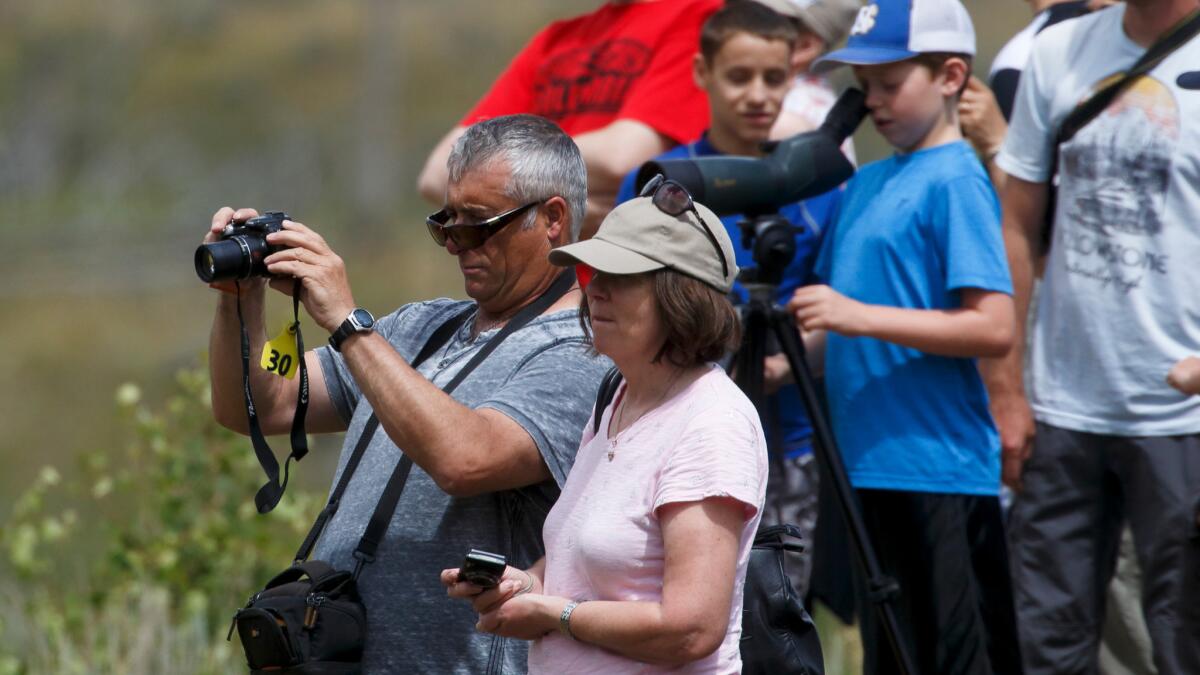Road-widening in Yellowstone means lost trees but increased visitor safety

Question: I just returned from Yellowstone National Park and was appalled by the miles of healthy trees being chopped down along the roadsides. Why? To widen the road so more tourists can come? To make more money? We think the fox is guarding the henhouse.
M. Ryan
Westminster
Answer: Yellowstone National Park, which has its feet in Idaho, Montana and Wyoming, is the oldest of the 412 National Park Service units.
In fact, it predates the park service, an organization that is a comparative youngster: The park service was founded in 1916. Yellowstone was named a national park in 1872, more than four decades before the park service was founded.
The blame for roadwork doesn’t fall on a greedy park service; if the park service were a money-making organization, it wouldn’t be asking Congress for nearly $12 billion to address issues of deferred maintenance.
Instead, the issue is age. Although the Department of the Interior once banned autos from parks, it loosened that restriction by about 1907, according to a park service history of road development. Within a few years, autos were allowed into Yellowstone, although concern remained about frightening teams of horses.
No one anticipated that the trickle of visitors in those early years would eventually grow to 307 million, the number of people who visited U.S. national parks in 2015. (To put that number into perspective, the U.S. Census Bureau estimates our country’s population at 321 million as of 2015.)
Yellowstone accounted for about 4 million of those visitors last year, and it’s having record visitation this year. For this, you can thank the publicity surrounding the park centennial, lower gas prices that encourage travel and the park service’s “Find Your Park” program, which helps people choose their park based on geography or the experience (boating, for example, or history) they wish to have, said Morgan Warthin, public affairs officer for Yellowstone.
These visitors come to this natural wonder on roads that are, in Warthin’s words, “very old and small.” A Honda Civic sedan, for example, is nearly 71 inches wide. Some of the roads are as narrow as 30 inches.
Ultimately, Warthin said, it has become a safety issue, especially when tour buses are involved.
The road widening from Mammoth Hot Springs to Norris, which Warthin thinks is probably what Ryan saw, also includes some enhancements. Turnouts for wildlife viewing are being added, which could lessen an annoying and dangerous visitor inclination, which is to stop dead in the road when wildlife is spotted.
And perhaps most important, some roads are being aligned to better protect geothermal features, Warthin said.
Protection of national parks is especially important for a jaw-dropper such as Yellowstone, especially in light of an Associated Press report last week that detailed bad park behavior, and we’re not talking about the animals, at least not the four-legged kind.
In Yellowstone, rangers are recording more wildlife violations, more people treading on sensitive thermal areas and more camping in off-limits areas, the article said. The rule-breaking puts visitors in harm’s way and can damage resources and displace wildlife, officials said.
“The flouting of park rules stems from disbelief among visitors that they will get hurt,” said Yellowstone superintendent Dan Wenk, AP reported.
Our desire to be outdoors and to know nature is a delicate, sometimes awkward dance, as violations of park rules show.
More tourists will come unless park visitation is capped, which is one solution. But until that happens, the question is whether those travelers can visit safely.
Removing trees to widen roads is done with careful planning, Warthin said.
The Yellowstone Center for Resources, created in 1993, reviews any plan “that involves any sort of impact to natural or cultural resources,” Warthin said. “It’s a comprehensive planning effort that happens before any tree is removed.”
Once upon a time, Yellowstone was the Wild West. It was so out of control in the 1880s that poachers and vandals were destroying it, so angering Congress that it brought in the U.S. Army to run it.
Safety enhancements and intelligent management of resources must learn to live in harmony, albeit an imperfect one, if Yellowstone is to live to see its 200th birthday.
Have a travel dilemma? Write to travel@latimes.com. We regret we cannot answer every inquiry.
ALSO
Will the next president be an enemy of our national parks?
Developers, projects knocking on national park gates
Want to hike Point Reyes? Try this four-day backpacking trip
More to Read
Sign up for The Wild
We’ll help you find the best places to hike, bike and run, as well as the perfect silent spots for meditation and yoga.
You may occasionally receive promotional content from the Los Angeles Times.







